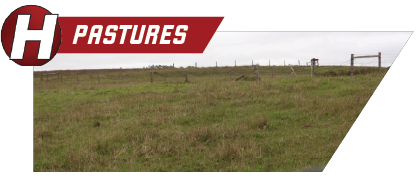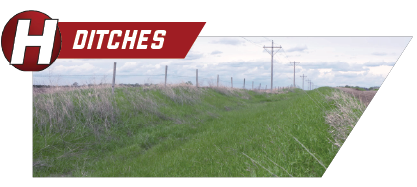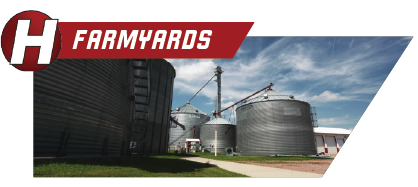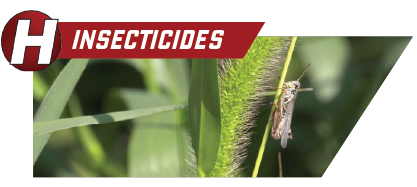

I don’t have the statistics on this, but I’d bet there are more acres in the U.S. of PASTURES, DITCHES, FARMYARDS, AND OTHER NON-CROP AREAS that need weed control each year than there are crop acres…
When I talk to farmers, though, we always spend 99 percent of the time talking about the crop acres. I can certainly understand that, because crop yield suffers dramatically from weeds, but that doesn’t mean you should neglect all your other acres.
Weeds in pastures definitely affect grass production. Weeds in ditches and farmyards are eyesores, and those weeds easily spread into cropland if left uncontrolled.
HERE ARE MY BEST SUGGESTIONS ON WHAT YOU SHOULD DO WHEN IT COMES TO SPRAYING THESE AREAS.

STOP USING OLD 2,4-D!
It drifts and/or volatilizes easily and causes lots of problems for all of us in ag.
Instead, use one of the new formulations like Freelexx (straight 2,4-D) or Duracor (2,4-D replacement plus Milestone).
If you want even better control on perennials, Milestone is the best product for thistles, and it can be used closer to water than Tordon. Tordon isn’t quite as good on thistles, but it’s great on leafy spurge. Chaparral is the best on brush species.
All three of those herbicides have LOTS of residual, so make sure you won’t be putting that pasture into crop production for several years after application.

This is the area most often neglected in rural America, in my opinion.
This is where Freelexx fits very well, as we’ve seen almost no volatility, yet similar control to old 2,4-D. In the past, if we wanted no volatility, we were usually talking Buctril or Basagran, but those products are terrible compared to Freelexx.

Due to trees, flowers, pets, buildings, kids, etc., spraying around your farm place is often challenging.
With old 2,4-D, we often encouraged people to spray very early in the spring and very late in the fall to avoid off-target movement. Now, there are three great options.
Freelexx is good on thistles and can be used almost anywhere in the farmyard. In the grass around your house, we also like Tenacity, which is the same as Callisto you use in corn. It’s good on most clovers and a wide variety of broadleaves. For crabgrass in the yard, use Drive. That’s the same as Facet L herbicide in milo.

With pastures and ditches, many insecticides aren’t labeled, and they’re usually not too necessary unless grasshoppers come along.
Sevin and Malathion are labeled in most situations. Silencer is also often labeled in non-crop areas. Dimilin is very specific for grasshoppers and a few other bugs, but it must be sprayed when the hoppers are relatively small. Compared to pastures and ditches, farmyard spraying is where insecticide use is far more common.
HERE’S WHAT WE RECOMMEND: Use Merit (or the generic imidacloprid) granules in the spring and possibly every couple of months for grub and other soil insect control.
If you have moles, for example, don’t kill the moles. Kill their food – grubs – then, the moles will leave. Put at least an inch of water on right after application to get the Merit into the soil. Merit is the same as the Gaucho seed treatment that gets applied to your corn, soybean, or wheat seed each spring.
Also, consider spraying Tempo monthly around your yard, the foundation of your house, and even inside your house. Tempo will kill ticks, ants (if you use a high rate), grasshoppers, bedbugs, wasps, cockroaches, crickets, spiders, and many other harmful and pesky insects. It’s even pretty good on flies and mosquitoes.
I know it may not pay you a lot of money to manage weeds and insects in your pastures, ditches, and farmyards, but it’s just something you’ve got to do. Not only will these areas look better, they’ll also be safer and present less chance of damaging your cropland.
